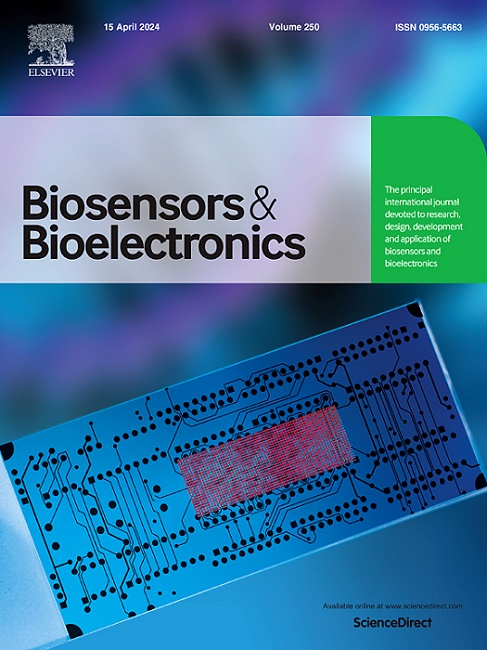A telomerase-enhanced homogeneous cascade amplification strategy designed for highly sensitive electrochemical detection of microRNA
IF 10.7
1区 生物学
Q1 BIOPHYSICS
引用次数: 0
Abstract
Highly sensitive and specific detection of microRNAs (miRNAs) is vital for cancer early diagnosis. In this work, we have proposed a telomerase-enhanced homogeneous cascade amplification strategy for high-performance electrochemical detection of miRNA-21 (miR-21). The target miRNA is first transcribed and amplified into massive single-stranded output DNA fragments through the endonucleases-assisted primary amplification element. Then, the output DNAs can activate the telomerase-promoted entropy-driven DNA catalytic (EDC) circuit, which can significantly improve the amplification efficiency and release a mass of linker DNAs, achieving the secondary amplification of miR-21. Finally, the G-quadruplex loaded with plenty of electroactive substances can be captured on the electrode via the linker DNAs for highly sensitive detection of miR-21. The fabricated electrochemical biosensor exhibits a broad linear range from 1 aM to 1 nM with the detection limit of 0.36 aM. The exceptional sensitivity and specificity endow this biosensor with the ability to discriminate miR-21 from the interference miRNAs and proteins. In addition, the biosensor has been utilized to analyze miR-21 expression levels in human serum and diverse cell lysates, demonstrating its practicability in real sample analysis. Therefore, our designed electrochemical biosensor will have huge potential in analysis of cancer-related miRNA and early cancer diagnosis.
求助全文
约1分钟内获得全文
求助全文
来源期刊

Biosensors and Bioelectronics
工程技术-电化学
CiteScore
20.80
自引率
7.10%
发文量
1006
审稿时长
29 days
期刊介绍:
Biosensors & Bioelectronics, along with its open access companion journal Biosensors & Bioelectronics: X, is the leading international publication in the field of biosensors and bioelectronics. It covers research, design, development, and application of biosensors, which are analytical devices incorporating biological materials with physicochemical transducers. These devices, including sensors, DNA chips, electronic noses, and lab-on-a-chip, produce digital signals proportional to specific analytes. Examples include immunosensors and enzyme-based biosensors, applied in various fields such as medicine, environmental monitoring, and food industry. The journal also focuses on molecular and supramolecular structures for enhancing device performance.
 求助内容:
求助内容: 应助结果提醒方式:
应助结果提醒方式:


